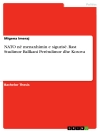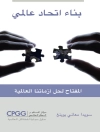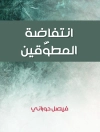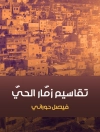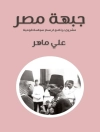This volume focuses on interpreting the changing domestic and regional dynamics in the Arab world and Iran. Its chapters discuss an array of countries, events, actors, and issues – from an examination of the Arab Spring and the Tunisian democratic transition, to an exploration of the role of Saudi-Iranian geostrategic rivalry, to the impact of ethnic and sectarian politics in Syria, Iraq, and across the region. Chapters from expert contributors are organized into three parts. The first section of the volume covers the aspects and dynamics of change in the Arab world. The second examines the role of Islam, Islamism, Islamic governance, and sectarian and ethnic politics in the region. The third section focuses on Iranian domestic and regional politics. Yet the theme of transition is constant throughout as this multidisciplinary book draws connections across countries and events to not only inform about the prevailing regional situation, but also to invite readers to draw their own conclusions as to the future of the Middle East. Collectively the volume provides a fresh interpretation of the changing dynamics of the Arab world and Iran, unpacking the complexities of the disputes, conflicts, rivalries, failed goals, and processes of change and development that have made the Muslim Middle East so turbulent, directionless, and perpetually contested by both regional and international actors.
विषयसूची
Chapter 1 The Middle East and North Africa: An Arena of Change and Transition?; Amin Saikal.- Part I The Arab World: Prospects and Challenges in Transition.- Chapter 2 Prospects for Democratization in the Middle East Post-Arab Spring; Fethi Mansouri.- Chapter 3 The Post-Uprising Arab World and the West: Mythology and Cultural Challenges; Robert Bowker.- Chapter 4 Political Economy Dynamics in the Arab Gulf States: Implications for Political Transition; Matthew Gray.- Part II Islamism and Sectarian Politics.- Chapter 5 Islam, Islamism, Muslims, and Governance: Beyond “Islam and Democracy”; Hisham Hellyer.- Chapter 6 The Saudi ‘Ulama and the Syrian Civil War; Raihan Ismail.- Chapter 7 Sectarian and Ethnic Politics: The Syrian Conflict; Minerva Nasser-Eddine.- Part III Iranian Domestic Politics and Regional Influence.- Chapter 8 Iran’s Syrian Foreign Policy Objectives; Shahram Akbarzadeh.- Chapter 9 Iran’s Relations with Afghanistan’s National Unity Government; Bruce Koepke.- Chapter 10 Iranian-Saudi Relations in a Changing Regional Environment; Amin Saikal.- Chapter 11 Conclusion; Amin Saikal.
लेखक के बारे में
Amin Saikal is Distinguished Professor of Political Science, Public Policy Fellow, and Director of the Centre for Arab and Islamic Studies (Middle East and Central Asia) at the Australian National University. He has published numerous books as author and editor; his work has also appeared in major journals and dailies, including
The New York Times, International Herald Tribune, The Wall Street Journal, and
The Guardian. He is a frequent commentator on TV and radio networks on issues pertinent to his field of specialty.


